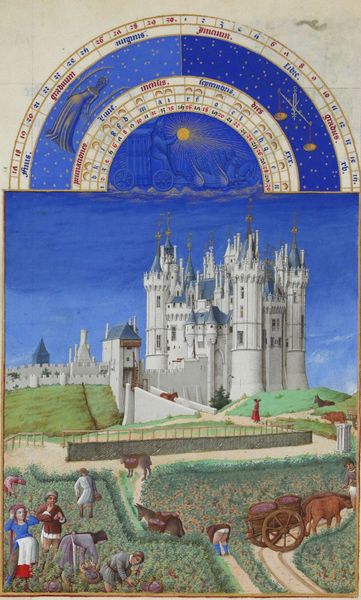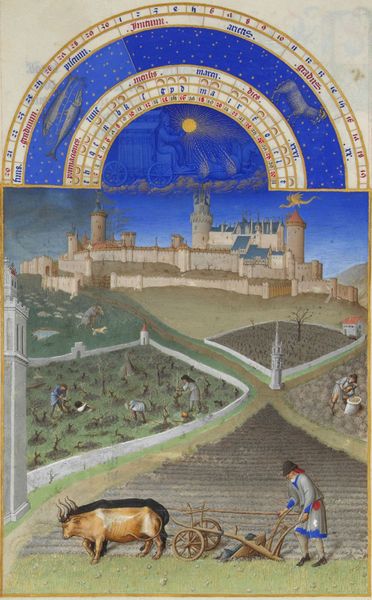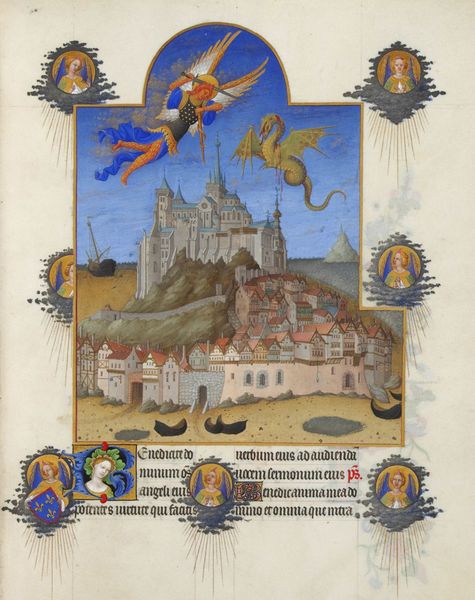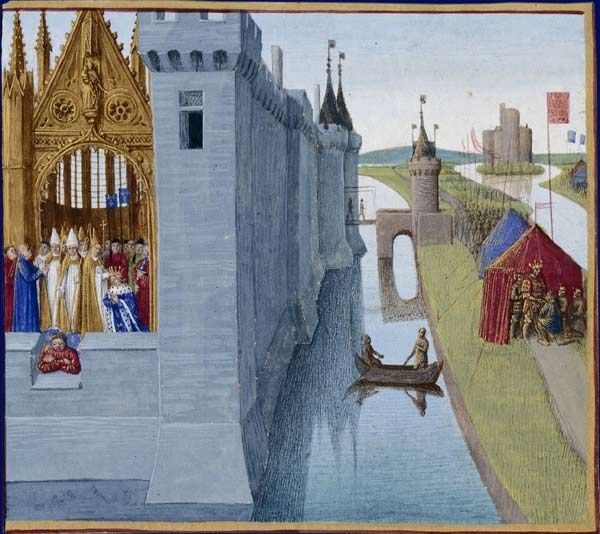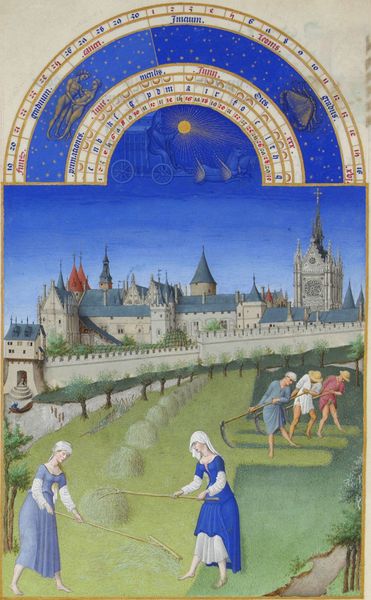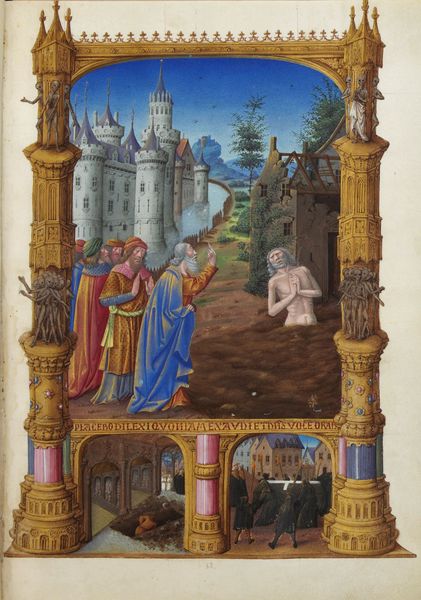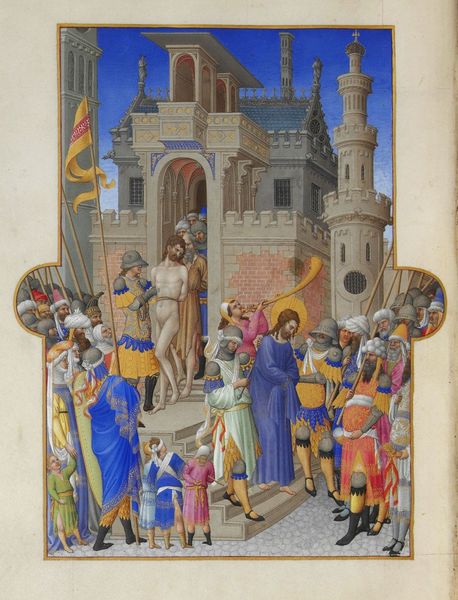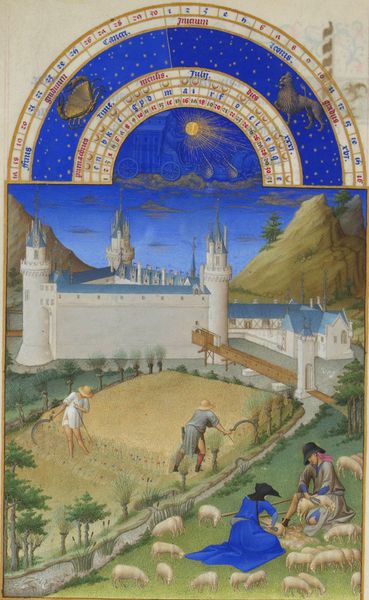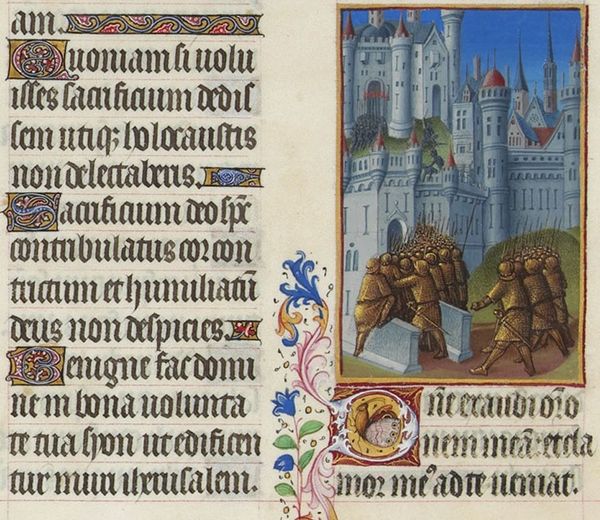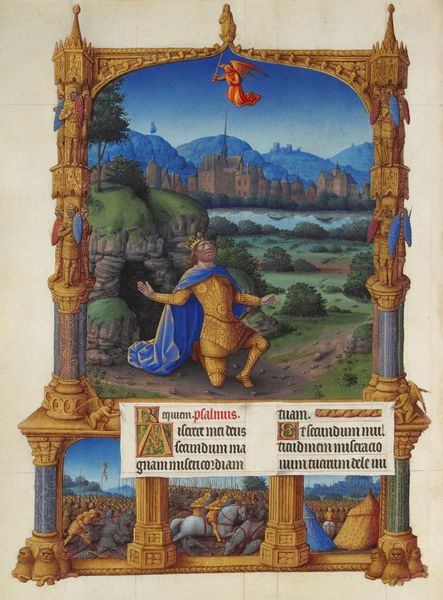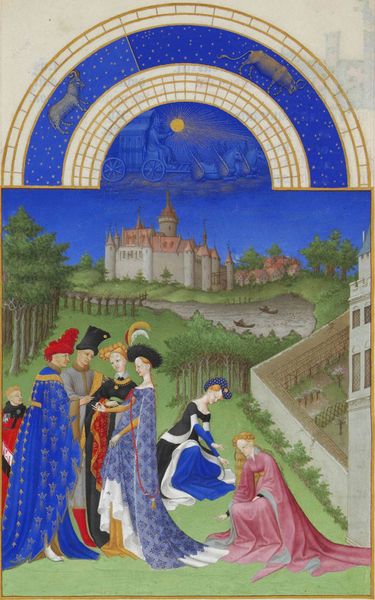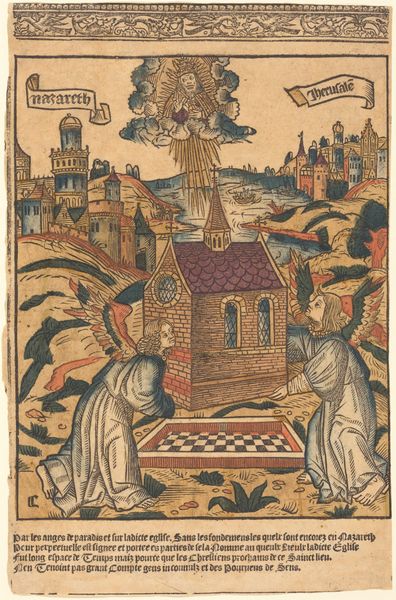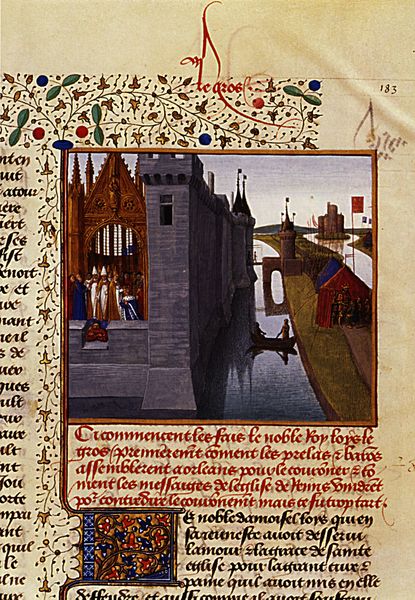
tempera
#
medieval
#
tempera
#
traditional media
#
landscape
#
figuration
#
jesus-christ
#
journal
#
history-painting
#
international-gothic
#
miniature
Copyright: Public domain
Curator: Look at this illumination, "The Temptation of Christ," believed to be by the Limbourg brothers. This tempera painting presents a fascinating interplay of faith, power, and morality. Editor: My immediate reaction is to the striking verticality. The composition soars, anchored by this incredible, almost fairytale-like architectural structure to the left that extends all the way to the peak, where we find Christ facing the devil. Curator: Absolutely. To understand the full narrative, let's place ourselves within its original context: medieval Europe, deeply entwined with religious beliefs and powerful societal structures. This image visually articulates that power dynamic. It embodies that period’s worldview regarding good versus evil and the individual's relationship to divine authority. The location for each element of the scene is carefully and deliberately chosen to maximize this visual tension. Editor: Yes, the formal contrasts are quite stark and are reinforced by this duality. The crisp details and vibrant colours applied to each structure is interesting and effective. The artists' focus is very precise. I'm drawn to how the ethereal quality of the landscape fades further away in the composition to focus on the towers and Christ on the crag in the immediate foreground. Curator: Notice how Christ is depicted? How his very figure becomes part of a much wider power play. His ordeal reflects broader questions concerning humanity, authority and resistance at that time, resonating across different identities within society. Editor: Thinking about form again, I can't ignore the geometric organisation. See how it seems so measured. Even the horizon bends within the frame, reinforcing the boundaries, offering a lens through which we are directed towards this dramatic moment. Curator: By understanding how these forms are placed within historical and theoretical context, we come to realise how deeply embedded within their time such art can be. It invites continuous dialogue, ensuring artworks retain their place as social and historical texts for today. Editor: Absolutely, and by appreciating the pictorial structure we're provided with another way of engaging in history and experience. The art itself serves as this fascinating space for understanding and thinking.
Comments
No comments
Be the first to comment and join the conversation on the ultimate creative platform.
